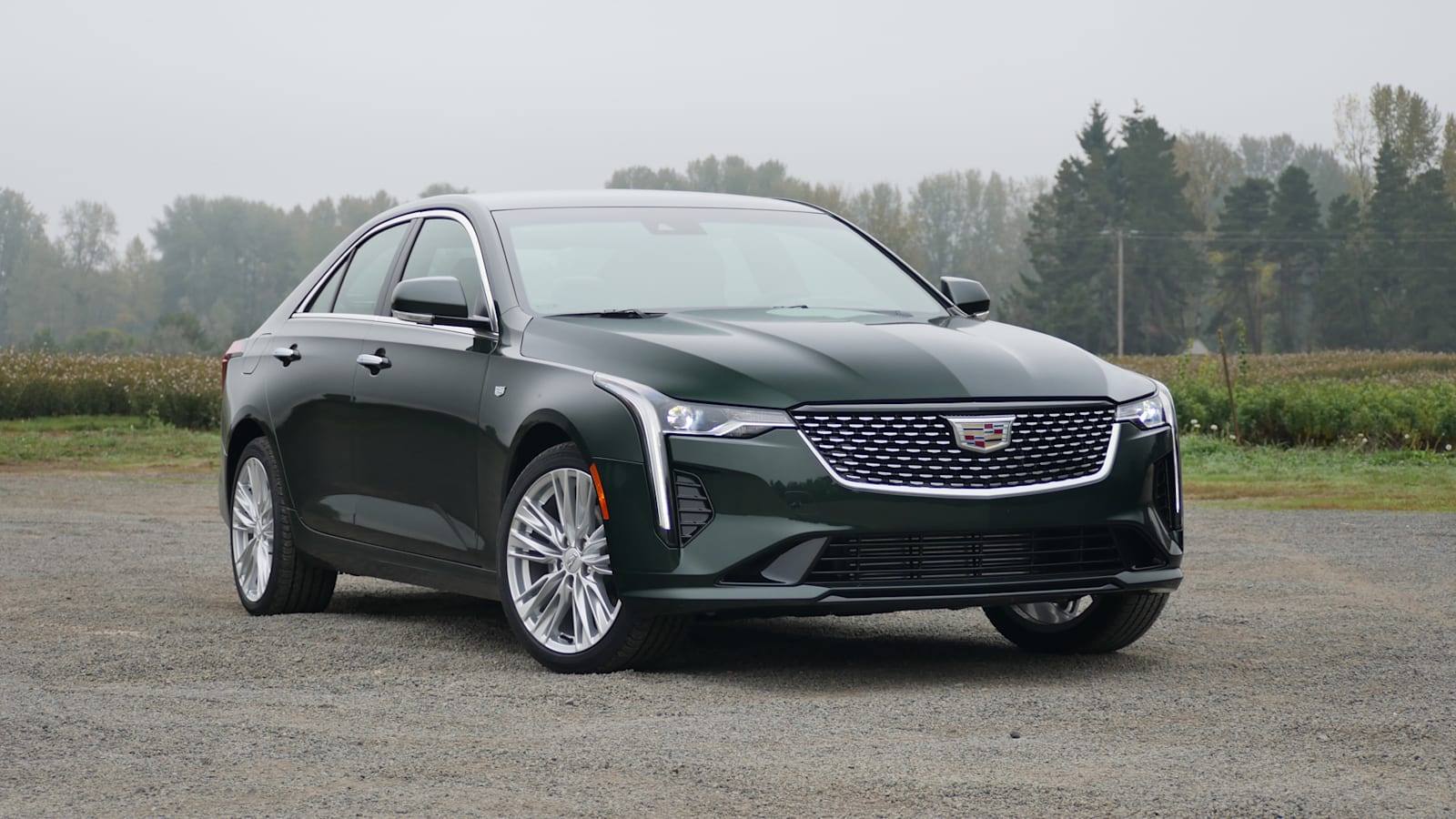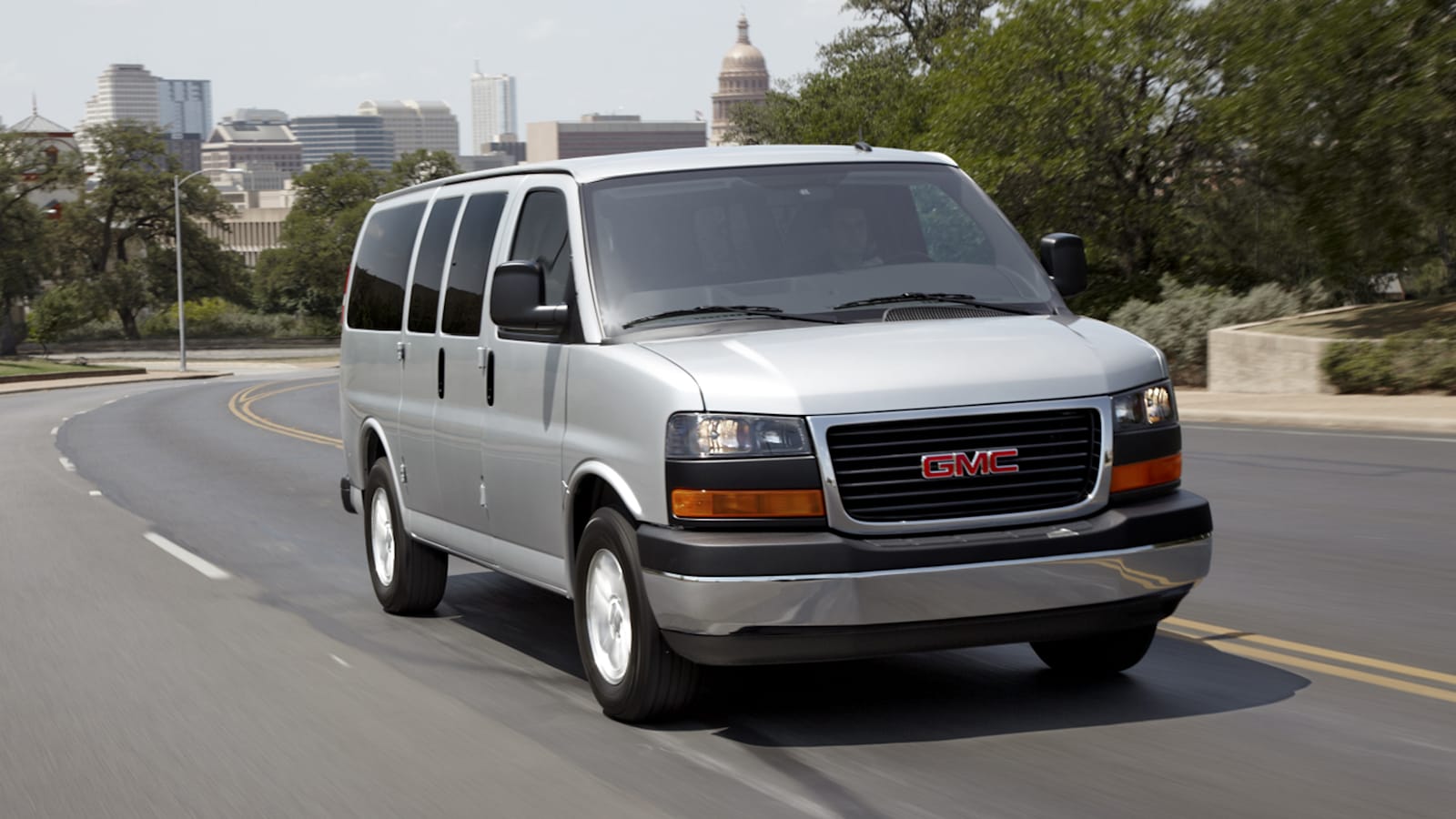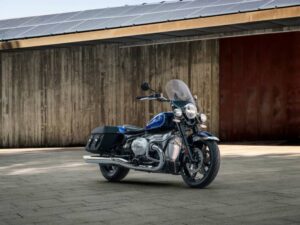Best and Worst GM Cars

Oh yes, because we just love receiving angry letters from devoted Pontiac Grand Am enthusiasts, we have decided to go there. Based on a heated group Slack conversation, the topic came up about the best and worst GM cars. First of all time, and then those currently on sale, and then just mostly a rambling discussion of Oldsmobiles our parents and grandparents owned (or engineered). Eventually, three of us made the video above. Like it? Maybe we can make more.
Many awesome GM cars are definitely going unmentioned here, so please let us know your bests and worsts in the comments below. Mostly, it’s important to note that this post largely exists as a vehicle for delivering the above video that dives far deeper into GM’s greatest hits and biggest flops, specifically those from the 1980s and 1990s. What you’ll find below is a collection of our editors identifying a best current and best-of-all-time choice, plus a worst current and worst-of-all-time choice. Comprehensive it is not, but again, comments. -Senior Editor James Riswick
Best Current GM Vehicle
Chevrolet Corvette
We were flying by the seats of our pants a bit in this first outing and my notes were similarly extemporaneous. When it came time to tie it all together on camera, I failed spectacularly. Thank the maker for text, because this gives me the opportunity to perhaps slightly better explain my convoluted reasoning. I chose the C8 Corvette because it’s simply overwhelmingly good, and it’s merely the baseline from which this generation of Corvette will be expanded.
While the Cadillac CT5-V Blackwing (more on that in a minute) is an amazing snapshot of GM’s current performance standing and its little sibling so enraptured me that I went out and bought one, their existence is fleeting. Corvette will live on; forced-induction Cadillac sport sedans, not so much. So while all three are amazing machines when viewed in a vacuum, the Corvette stands above them as both a reflection of GM’s current performance credentials and a signpost of what is to come.
So, given the choice between the C8 and the 5V-Blackwing right now, I’d choose the C8. In 10 years, when the Blackwing is no longer in production and Corvette is in its 9th generation? Well, that might be a different story. Now, just pretend I said something even remotely that coherent when we get to the part of the video where I try to make an argument for the 5-V Blackwing as best GM car I’ve ever driven. Or just laugh at me while I ramble incoherently. Your call. — Associate Editor Byron Hurd

Cadillac CT4
Wait a minute. Byron actually owns a Cadillac CT4-V Blackwing and he didn’t pick it? Or the CT5? Wow. Oh well, I guess that means I can pick my top choice of the CT4. It doesn’t even need to be a Blackwing, either. Or the -V. A regular CT4 with the 2.7-liter as pictured above is still a fantastic sport sedan that I’d rather drive than any of the subcompact front-drivers it competes with on price, or the BMW 3 Series, Acura TLX, Genesis G70, etc. Great steering, impeccable chassis, smart transmission … it all just feels right. I think it looks great, too.
Now, is the Cadillac CT4 the most relevant car that General Motors sells? Oh hell no, it’s probably going to be canceled any minute, but if I think about a GM vehicle I consider to be a segment leader, this is it. Hopefully its electric successors are just as excellent. — Senior Editor James Riswick

Chevy Silverado 3500 HD
Yeah, a truck. In reality, it’s hard to argue against the Corvette as the best vehicle GM currently makes, but it’s not hard to make a case for the big ‘ol 3500, either. Consider: For less than $58,000, a buyer can snag a Silverado with four doors, four-wheel drive, dual rear wheels and a 6.6-liter turbodiesel engine mated to a 10-speed automatic. Skip the creature comforts (of which a great many are available) and you’re left with a truck that boasts 910 pound-feet of torque and a strong enough package to tow as much as 36,000 pounds or haul up to 7,400 pounds in the bed.
It’s silly to consider that a bunch of people will buy these machines of conspicuous consumption just because they like them, but let’s also not overlook the fact that a sizable chunk of the population truly needs vehicles like these for their jobs. And for those hard-working individuals, a $60,000 investment equals many reliable years of solid vehicular ownership. Sure, it’s stupid for a lot of people, but vital for a few. — Consumer Editor Jeremy Korzeniewski

Chevy Bolt EUV
I’m going to go out on a limb here, at least until the launch of the Cadillac Lyriq, and call the Chevy Bolt EUV GM’s best current vehicle. The first-gen Bolt was a solid, affordable EV, but the current gen improved upon that with a new Bolt, and the even better Bolt EUV. It’s powerful, fun, comfortable, economical and full of great tech. It was the first vehicle outside the Cadillac brand to get GM’s outstanding Super Cruise sometimes-hands-free driver assistance system.
It’s a shame about the battery issues, the biggest asterisk/caveat in calling it the best. But now that you can get one that won’t threaten to burn your house to the ground, it’s a coup for the democratization of long-range, high-tech EVs. — Senior Editor, Green, John Beltz Snyder

Chevy Corvette
Byron is right. The only answer to this question is Corvette. It’s so ridiculously good at everything and priced so cheaply that I can’t in good conscience pick any other current GM vehicle. In this case, it’s worth you having to read two Corvette entries on this list, only to cement the point that it truly is the best GM car currently on sale. – Road Test Editor Zac Palmer
Best GM Vehicle of All Time
1969 Pontiac GTO
It’s not often that historians can look back at an entire vehicle segment and pinpoint exactly when it was created. Such is the case with the muscle car, however. While the 1964 Pontiac GTO wasn’t the first car offered in America that featured a powerful V8 engine, it was undoubtedly the first vehicle to define the principle: biggest engine, smallest package, reasonable price, proper marketing campaign. Thus the muscle car segment was born, and from it came such legendary nameplates as Road Runner, Chevelle and Torino. But the GTO that best represents the overpowered heydays was, in my opinion, the 1969 Pontiac GTO Judge, resplendent in Carousel Red (actually orange) paint and just-shy-of-tacky graphics. So there you have it, the best GM vehicle of all time. — Jeremy Korzeniewski

2011 Chevy Volt
I’m pretty biased here as my maternal grandfather, John Beltz, was chief engineer and then general manager of Oldsmobile until his death in 1972. It would be easy for me to pick the first-gen Olds Toronado or 442. I’m going to lean into my other bias, however, and pick one of the most important electrified vehicles of all time. The Chevy Volt may have had a very strange song-and-dance introduction (tied for awkwardness with the car’s Cyndi Lauper photo op), but it was a huge jolt for the automotive industry, hitting the scene pretty much simultaneously with the equally disruptive (but much more anxiety-inducing) Nissan Leaf EV, back when Tesla was still stuffing its rarified powertrains into Lotus bodies. The Volt’s success more than made up for the EV1 fiasco, and I considered it a great car to drive up until the day it died. — John Beltz Snyder
1967 Cadillac Eldorado
Honestly, I’ve given us an impossible task here. Best of all time? When you consider what happened when the IIHS crashed a 1959 Chevy Bel Air into a 2009 Chevy Malibu, it’s pretty obvious the problem with trying to compare cars across eras. Nevertheless, putting aside such things as fuel economy and whether the car will kill you on impact, I decided to focus on design excellence, engineering innovation and market relevance. Even then, I readily admit there’s probably something more worthy here.
OK then, 1967 Cadillac Eldorado! I’m a sucker for personal luxury coupes and this one designed under the supervision of GM icon Bill Mitchell is a knockout. I’m also a sucker for hidden headlights (the only production Cadillac to have them, apparently) and minimal taillights, and this car has both of them. As for engineering innovation, it was the first Eldorado to adopt front-wheel drive, specifically the Oldsmobile Toronado’s “unified powerplant package” that managed to fit V8 and transmission in the space normally dedicated just to the engine. Kudos to Snyder’s granddad for that one. It was also an early adopter of the energy-absorbing steering column, which could both tilt and telescope. As for market relevance, it tripled the sales volume of its predecessor, driving Cadillac to its best sales year ever at the time. The Lincoln Continental coupe managed 6,870 fewer units, or about 61% of the Eldorado’s volume. Sales would go up even higher a year later. So, best? Eh, I don’t know. But it sure was great. — James Riswick

1963 Chevrolet Corvette Stingray
Ah, yeah, this is clearly the correct answer. – Everyone else
Worst Current GM Vehicle
GMC Savana
The GMC Savana is the worst GM vehicle. First, it dates back to the Clinton administration. The first term, too! Now, admittedly, full-size plumber-and-church vans have a much longer lifecycle than the typical passenger vehicle because, well, being state-of-the-art just isn’t as important. Still, 1996. Second, all of its full-size plumber-and-church van competitors have finally adopted a more modern, space efficient and fuel-efficient format seen elsewhere in the world since, well, before 1996 actually. For instance, even tall people can walk around upright in the tall roof version of a Ford Transit. Even small children will struggle to do so in a Savana. Third, the Savana is the badge-engineered GMC version of the Chevrolet Express, and choosing something badge engineered was a must. And finally, fourth, what’s the deal with the spelling? In English, the grassy African plain is a savanna. The city in South Carolina is Savannah. So was this thing named after a girl whose parents decided to spell it Savana? I’ve already written too much about this thing. Bad bad bad. — James Riswick

Chevy Camaro
I know, I know. I bag on the poor Camaro too much. But realize this: there really aren’t a lot of “cars” left in the GM portfolio, and as good as the Camaro is to drive (and it is really good to drive), it’s quite unpleasant to live with and pretty “meh” to look at. Say what you will about Ford’s recent aesthetic adjustments to the Mustang, they’re not nearly as incoherent as whatever happened to the nose of the Camaro when Chevy refreshed it. The Camaro is right up there with the smiley-face Mazda3/Speed3: cars I’d be happy to drive but have virtually no interest in owning. — Byron Hurd

GMC Sierra Denali
I just went to GMC.com and used their online configurator to virtually build a 2023 Sierra Denali that would cost $86,360. Naturally, I chose all the best bling, including beautiful pearl white tri-coat paint and 22-inch bright chrome wheels. It really is a gorgeous pickup truck, but a pickup truck that I would absolutely never do any actual trucky work with. I have nothing against trucks, even ones with the kinds of creature comforts that will make its owner’s life just that little bit better. Heck, I nominated a heavy-duty Chevy truck as the best vehicle that GM builds, and I actually prefer the looks of the Sierra. Thing is, big burly trucks are designed for a purpose, and that purpose is to put in hard work. The current trend toward more and more luxury in the biggest trucks ever offered for public consumption isn’t a good thing.
One important note: I didn’t choose the big diesel-powered dually Denali here; this is the regular 1500-class truck with a 6.2-liter gasoline-fueled V8. I’m willing to concede that the 2500 or 3500 Denali might be just the high-end, trailer-pulling truck that an avid camper or outdoorsman is looking for, and that’s fine. But as a darn-near $90,000 luxury toy that’s never going to see dirt, a trailer hitch or even a heavy load in its bed? That’s a creation I’d like to think society could do without. — Jeremy Korzeniewski

Chevy Trax
Which is worse: the Chevy Trax or the Ford EcoSport? Discuss. — John Beltz Snyder

Buick Encore
I can’t let the Chevy Trax have all the fun. Buick’s version of this little lump of a car might actually be worse, only because it’s going to cost you more than the Trax. While a Trax starts at just $22,595, the Encore is offered in a single trim that starts at a rather egregious $25,795. It shares the Trax’s poor qualities, and I honestly think the Encore looks a tiny bit worse. GM knows these two little ones are decidedly not it either. Both are taking their farewell bows after 2022, and they’re not coming back. — Zac Palmer
Worst GM Vehicle of All Time
Cadillac Cimarron
Let’s talk about egregious badge engineering. That is, slapping different badges on the exact same car and shipping them out to dealers as if somehow the Chevy, Pontiac, Buick, Oldsmobile, GMC, Geo, Asuna, Saturn or Saab 9-7X were somehow different. Yet, the most egregious example is easy to identify: the Cadillac Cimarron. It was quite obviously a Chevrolet Cavalier (or Buick Skylark, Pontiac Sunbird or Oldsmobile Firenza) with a Cadillac grille, vinyl roof, spiffier wheels and “nicer” interior. That was not sufficient. It was a punch line then, it is a punch line now, and it would forever be remembered as a cautionary tale for those looking for a quick-cheap-and-easy way to flesh out a brand lineup. Cadillac mostly learned its lesson — there was thankfully never a Cadillac version of the Chevy Uplander, Trailblazer or Traverse, for instance. There was a certain Caddy that zigged, however. And the original Escalade, but that would be proof of why badge engineering can be good business. — James Riswick

1985-1993 Cadillac Fleetwood
I don’t think I really need to defend this choice a whole lot. Riswick picked the most obvious Cadillac but as he said in the video, sometimes the easy choice is the correct one. That’s fair. But I’d like to call out the 1985-1993 Fleetwood, a front-wheel-drive extra “fancy” version of the DeVille not to be confused with the rear-wheel-drive Fleetwood Brougham’s that was sold at the same time. Clearly this fairly blatant cost-saving maneuver didn’t do what GM wanted, because an about-face was performed in ’94 and the line became exclusively RWD from top to bottom again. What a bleak interloper. — Byron Hurd

Late Seventies Early Eighties Chevy Corvette
I’m not saying this vintage of Corvette was the worst GM car of its time. It would be easier to call the Vega or Chevette the “worst.” Or Monza or Citation. Too easy. But think of the Corvette as the flagship of a pretty bad era.
In 1977-81, I worked my way through college in a Chevy dealership service department, a front-row view of GM at its nadir. The cars had so many issues, big and small. The worst job in the shop was the poor squeak-and-rattle guy, tasked with chasing down maddening build problems on cars that just weren’t put together well. And owners back then were up against a dealership and warranty process that were just this side of hostile.
The Corvette was not intentionally “cheap” or inherently “bad” like the Vega or Chevette — it was, as it is today, Chevy’s halo car, which in a way made its problems stand out more. The St. Louis Corvette plant had a reputation as a literal sweat shop with serious quality issues. We’d roll arriving new Vettes off the transport truck and straight into the shop for days or even weeks to fix their straight-from-the-factory problems.
The car looked cool, though. Still does. Maybe T-tops leaked, but I thought they were cool. And 180 horsepower’s only 310 less than a modern Stringray. Today, the other Chevys of that era have all rusted into oblivion, but fiberglass and the fact GM sold a lot of them mean that many C3s survive. They are even appreciating in value. And after 40 years, surely the kinks have been worked out, right? — Managing Editor Greg Rasa
General Motors EV1
First things first: the EV1 was not a bad car by any means. Still, I’m going to lay out an argument that it’s still the worst car GM ever made, due completely in part to the way the company mismanaged the program. It was previewed by the very well received Impact concept that the automotive press raved about and that set an EV speed record of 183 miles per hour, and it was almost universally loved and praised by its owners. Headlines across the country hailed GM as a forward-thinking company looking at new ways to power vehicles, namely with batteries and electricity instead of fossil fuels. GM was ahead of the game instead of playing catch-up. But then the automaker took them all back and killed them. Seriously, GM literally hauled ’em all to a secretive desert location and crushed them. Stories were written, movies were made, buyers were angry and any goodwill the automaker had gained with environmentalists and tree huggers was buzz-sawed to dust. And now, besides sitting dusty in a museum here and there, the EV1 no longer exists at all. — Jeremy Korzeniewski
Hummer H2
The H1 was sweet. It was basically a more approachable Humvee for the masses. The H2 was just big and ugly and slow and inefficient and … basically, just the punchable face of the car world. I can’t say I’m super excited about the Hummer revival. Sure the new one is electric and powerful, but there’s too much of the H2 in the new GMC offerings’ looks. Plus, it’s more than 9,000 pounds. It’s almost as obnoxious as its forebearer. Analogous to how the H2 got dragged for its size and thirst for fuel, if there was ever a poster car for an EV road use tax, this new Hummer is it. — John Beltz Snyder









